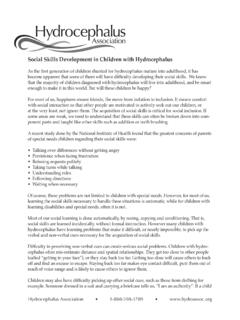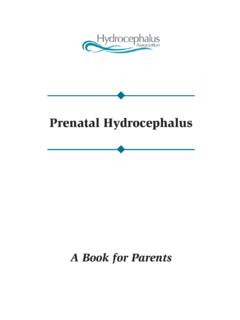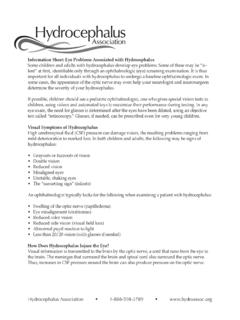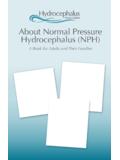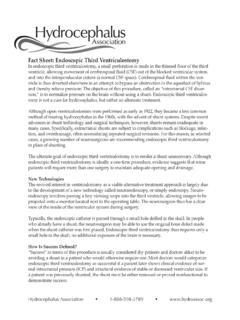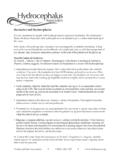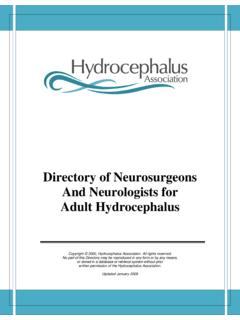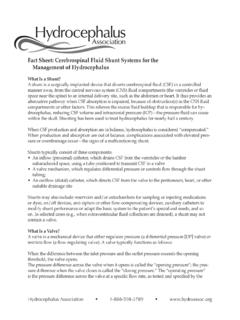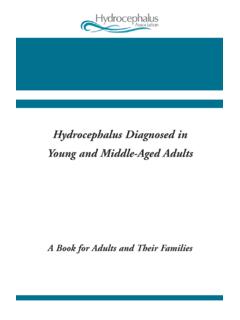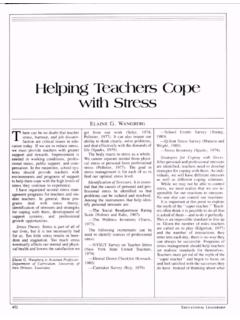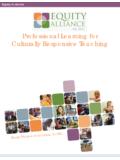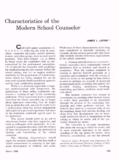Transcription of HEALTH-CARE TRANSITION GUIDE FOR TEENS …
1 HEALTH-CARE . TRANSITION GUIDE . FOR TEENS . AND. YOUNG ADULTS. WITH. HYDROCEPHALUS.. Contents Introduction .. 5. 1. Why TRANSITION ?.. 7. 2. What Is TRANSITION ? .. 8. 3. Pediatric vs. Adult-Centered care : What's the Big Deal? .. 9. 4. The Four Key Elements to a Smooth, Successful TRANSITION .. 14. 5. TRANSITION The Plan .. 22. Conclusion .. 28. Appendix A: Tips Just for Parents .. 29. Appendix B: Finding and Maintaining health Insurance.. 31. Appendix C: Additional Resources and Bibliography .. 33. Appendix D: Worksheets & Sample Forms .. 39. The Hydrocephalus Association is a national, 501(c)(3) nonprofit organi- zation founded in 1983 to provide support, education and advocacy to fam- ilies, individuals and professionals. Our goal is to provide comprehensive services that empower individuals and families to seek out the best medical care , programs and resources that meet their needs now and in the future. Hydrocephalus is a chronic condition.
2 With early detection, effective treat- ment and appropriate interventional services, the future for individuals with hydrocephalus is promising. We invite your inquiries. Resources About Hydrocephalus A Book for Families (English or Spanish). Hydrocephalus Diagnosed in Young and Middle-Aged Adults A Book for Adults and Their Families Prenatal Hydrocephalus A Book for Parents A Teacher's GUIDE to Hydrocephalus Directory of Neurosurgeons LINK Directory Quarterly Newsletter The Resource GUIDE Fact and Information Sheets Annual Educational Scholarships Annual Neurosurgical Resident's Prize Biennial National Conference for Families and Professionals This booklet was made possible by funds contributed by The Medtronic Foundation. Editor: Rachel Fudge Consulting Editor: Pip Marks 2003 Hydrocephalus Association, San Francisco, California Hydrocephalus Association 870 Market Street, Suite 705 San Francisco, CA 94102.
3 Tel 415-732-7040 Toll-free 888-598-3789 Fax 415-732-7044. Dedication we are extremely grateful to the first generation of people shunted for hydrocephalus for being our mentors and our beacons; for blazing the trail into adulthood, oftentimes with fragmented services and limited options for continuing care . You have shared with us your successes and also your pain and frustrations. You are our heroes and our heroines. We also express our gratitude to the men and women who have chosen to devote their medical practices to a specialty in pediatrics. Interest and expertise in the management of hydrocephalus has advanced and expanded hand in hand with the growth of pediatric neurosurgery. We are indebted to those pediatric neurosurgeons who have formed partnerships with us at the Association to provide sup- port, services and resources to our unique community, recognizing the potential for a life of quality and dignity for every person with hydrocephalus.
4 Emily Fudge Pip Marks Executive Director Director of Outreach Services Hydrocephalus Association Hydrocephalus Association 3. Introduction hydrocephalus is a chronic medical condition, meaning it is a lifelong condition that has no cure. In most cases, however, the symptoms of hydrocephalus are managed with a shunting device. The first generation of children successfully treated for hydrocephalus are now in their late 30s and early 40s. While there have been many advances in the diagnosis and treatment of hydrocephalus over the years, there remain many challenges most notably, continuation of comprehensive medical services and care for TEENS and young adults after childhood. This booklet will discuss the process of making the TRANSITION from pediatric-centered to adult-centered medical care , and provide strategies, resources and encouragement to the second genera- tion of children shunted for hydrocephalus and their families.
5 The goal of this GUIDE is to give TEENS , young adults and their fam- ilies the tools they need to understand and implement the TRANSITION to adult-centered medical care . We will: Discuss the current climates of both pediatric and adult-centered care . Present techniques for evaluating your current HEALTH-CARE situation. Provide planning materials to assist you in preparing for TRANSITION . Share strategies that will support, empower and GUIDE you. We have made every attempt to keep the tone of the GUIDE conver- sational and nonjudgmental. It is addressed directly to you, a young person with hydrocephalus; this is our way of celebrating your poten- tial and your journey to independence. Depending on your age, your parents or a friend may be reading this GUIDE with you, helping you get started with your TRANSITION planning. We also hope that it will be read by parents and medical professionals. An essential component of this process is self-determination (which we will discuss later in the GUIDE ), and to this end we encourage your parents and members of your HEALTH-CARE team to help you start taking control of your life and your future right now.
6 5. Throughout the GUIDE , we use quotes from real-life experiences, and point you to further information in appendices to this booklet. At the end of the GUIDE is a series of worksheets to help you on your tran- sition journey. We hope you will find them helpful and easy to use. Depending on your age and level of independence, you may want to work on some of them jointly with your parents, doctors and others on your team. You should redo them as you grow and mature you can chart your progress as you complete certain tasks and obtain new skills and knowledge. Remember, these are your documents and they should tell your story. The resources and references for this GUIDE have been many and varied. We tapped into 19 years of experiences here at the Association;. we have researched and read many articles and journals, and we have spoken to many experts those with lots of letters after their names and those with years of personal experience.
7 We are indebted to all who have written on TRANSITION and we have made every effort to give credit where credit is due in the bibliography. We hope this GUIDE will educate and empower you; we celebrate with you, and your family, as you journey toward adulthood and inde- pendence. 6. 1. Why TRANSITION ? in recent years, the majority of children with chronic medical conditions, including hydrocephalus, have been receiving their medical care in a pediatric-centered environment. Ideally, that care is family- centered, continuous, coordinated and compassionate. For children with hydrocephalus like you and their families, the neurosurgeon often becomes the HEALTH-CARE team leader, intimately involved in direct- ing care from the time of initial diagnosis well into young adulthood. It is not surprising, then, that you and your parents have come to expect that comprehensive, compassionate neurosurgical care will continue into young adulthood and beyond.
8 For a few of you, that indeed has been the case, as some doctors and/or medical centers extend care into adulthood for their pediatric patients. Realistically, however, pediatric-focused medical care ends at either 18 or 21, and ready or not, the challenges can be considerable if TRANSITION plans have not been put into place. The goal for all children, whether or not they have a chronic med- ical condition or a disability, should be to move progressively from dependence toward independence, gathering life skills that promote healthy self-esteem and self-sufficiency. All children need to be encour- aged to develop attitudes, skills and knowledge that empower them to control, as much as possible, their own destiny. As your parents encourage your move to independence, they must be willing to let go of their control, allowing you to make mistakes and encouraging you to use problem-solving skills to cope with challenges.
9 Fostering opportunities, even at a very young age, to develop self- confidence, self-esteem, feelings of value by others, determination and a positive outlook will ease your way, preparing you for your TRANSITION A study of adolescents age 11. to adulthood and a more independent lifestyle. to 14 done in the late 1980s Successful TRANSITION in health care requires the cooperation and revealed that 57% were unable to discuss or explain their dis- commitment of you, your parents, your current doctors and the new ability and 50% of them who providers of adult health care . It should begin years before you age out were taking medications could of pediatric services. Successful TRANSITION requires communication not name the medications or and collaboration among primary- care specialists, subspecialists, you give the reason for which they were being taken. and your family. 7. 2. What Is TRANSITION ? TRANSITION is a process, not a TRANSITION in adolescence is the movement from child-centered single event.
10 To adult-oriented activities. It is a process that depends on early educa- tion and coordination of effort by all involved persons. There are three major areas in TRANSITION : 1. From the school environment to the workplace. 2. From home to community living. 3. From child- and family-centered medical care to adult-oriented health care , which is the focus of this GUIDE . It is important to understand that TRANSITION is a complex process that includes and incorporates competency and self-development in many areas. HEALTH-CARE TRANSITION is a multifaceted, active process that can facilitate TRANSITION in other areas such as work, community and school. It involves an increase in independent behavior, personal autonomy, competency and self-awareness. Transitions are part of normal, healthy development and they will I don't want to make the TRANSITION I am very afraid. occur across your life span. The goal is to maximize lifelong function- ing and potential.
